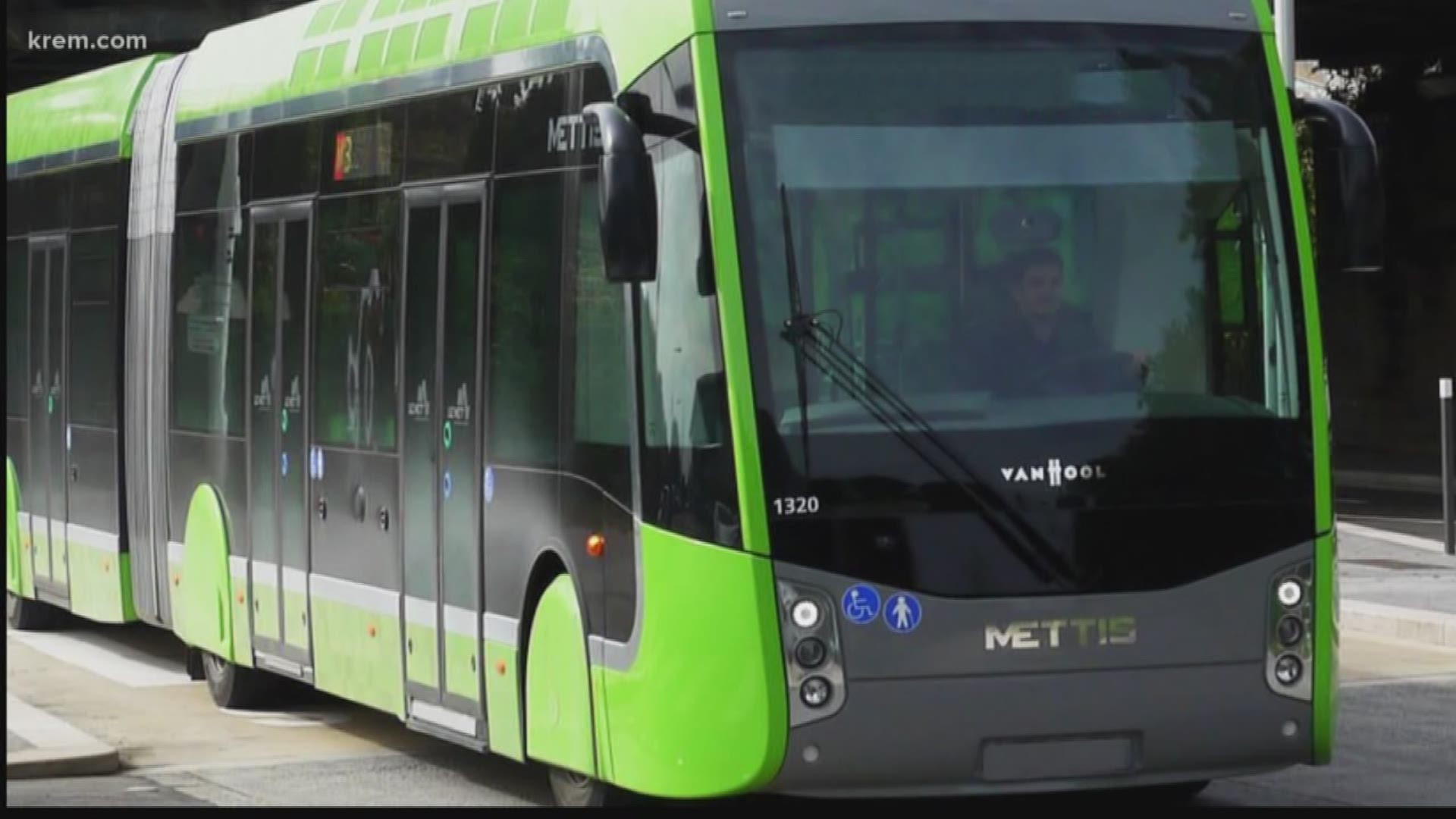SPOKANE, Wash. — Editor's Note: The above video is a report on the bus system by KREM's Alexa Block.
A long-envisioned line connected Browne’s Addition to the University District through downtown is set to become a reality in 2021. But that route will not involve a light rail.
Instead, it will be a “corridor-based Bus Rapid Transit route” that is expected to serve over 1 million riders a year and will be called the Central City Line, according to the Spokane Transit Authority’s website.
But, what is a “Bus Rapid Transit route?”
The line is a battery-operated bus that will make stops every seven to 10 minutes during peak hours along a fixed line, according to STA Director of Planning and Development Karl Otterstrom. This differs from a traditional bus that can run different routes or make detours.
The line will also be more high tech than the current lines, offering more updated stop times, Otterstrom said. At an estimated ridership of over a million a year, he said this will make the new line rival the busiest route on Division Street.
Otterstrom also said this should help lessen the stress on existing bus routes and traffic.
“There will be more substantial stations and stops, and more technology involved to help communicate when the bus is coming,” Otterstrom said. “Real-time signs to say when the bus is coming. It is a component of what they call bus rapid transit.”
According to plans contained on multiple STA websites, areas with stops along the line include Gonzaga University, Spokane Community College, the downtown area and WSU’s Spokane campus, to name a few. The route starts in the Garland District and ends near the SCC campus.
The decision to do this type of transit line instead of a light rail came about 10 years ago when the city was looking into funding the project.
While the original planning began back in 1999, a study was done over 10 years ago about light rails showed it wouldn’t be feasible due to funding issues.
“The public, through different planning documents beginning as early as 1999, called for an East-West trolley. Street cars were also explored,” Otterstrom said. “In 2010, we embarked on an alternatives analysis to look at different modes and types of vehicles and where to connect.”
Through those types of studies, it became apparent to planners that it wouldn’t be possible to do a light rail, and the trolley idea was ditched.
“Over 10 years ago, the region did a study on light rails that proved to be unfundable,” Ottterstrom said. “It wasn’t going to be eligible for federal funds.”
Funding for the project comes from a $72 million ballot measure passed in 2016, according to the STA. The funds are generated through sales tax and goes to a number of transit efforts, including bus route improvements, Otterstrom said.
These taxes are paid not just by Spokane residents, but by those living in the surrounding areas as well.
“The funding is through the STA. Spokane Transit is a transit authority in the state of Washington, so we went to voters in the region,” Otterstrom said. “It’s not just Spokane.”
The STA has also received $52 million from federal agencies, as well as additional funding from state agencies, according to Otterstrom.
Other improvements to the transit system include faster service on Regal St. on South Hill, the improvement of routes in underserved areas and Liberty Lake, and the possibility of offering a transportation route to Coeur d’Alene, Otterstrom said.

